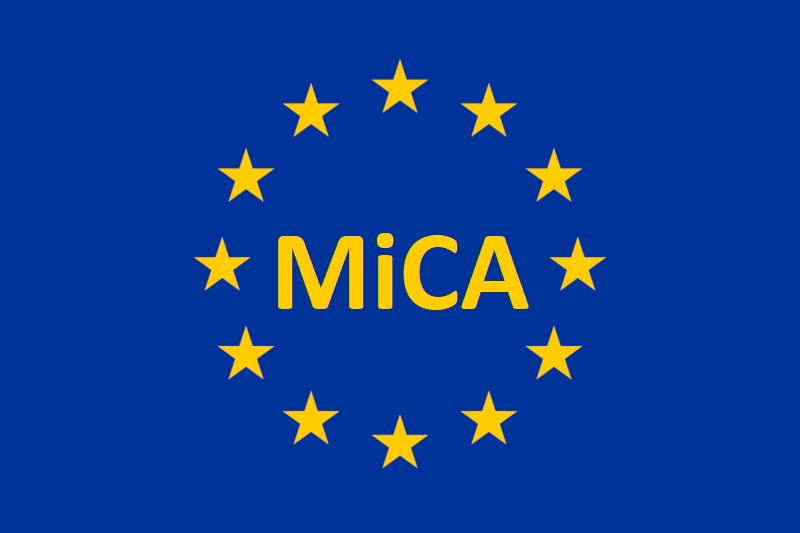The European Union stands out with its most significant regulatory step in the cryptocurrency realm. The EU MiCA regulation represents the first extensive crypto regulatory framework which the major global economic bloc has adopted. The global policy discussions about digital assets and compliance and innovation have begun shifting because of how other countries observe MiCA crypto regulation.
What is MiCA Regulation?
The following discussion requires us to define MiCA regulation first.
The European Union established MiCA as Markets in Crypto-Assets during 2023. The EU established MiCA regulation as a solution to create standardized rules for its unregulated crypto market, which has existed without clear legal boundaries since 2010. The rapid evolution of crypto has outpaced regulatory development until the recent establishment of MiCA regulation.
MiCA regulation defines enforceable legal standards to govern crypto-asset issuance, trading activities, and management operations within the EU. The regulation establishes three main objectives:
- Protecting consumers and investors
- The legislation aims to stop market abuse together with financial criminal activities
- The system aims to help innovative projects succeed without compromising financial sustainability
The complete implementation of this regulation will take place during the last quarter of 2024, and it covers every corner of the crypto sector including exchanges and wallet providers, as well as token issuers and operators of stablecoins.
Why the EU MiCA Regulation Matters
The EU MiCA regulation establishes itself as a major regulatory framework which affects both Europe and the entire worldwide crypto industry. The first advanced economy has developed a unified regulatory framework that covers the entire digital asset sector across a continent. The economic significance of the EU becomes crucial since it represents 14% of global GDP and handles more than 20% of crypto trading operations.
The United States has not established a unified federal system to regulate cryptocurrency at this time. The SEC and CFTC maintain a dispute about regulatory authority which creates ongoing uncertainty for investors and businesses operating between these agencies. The U.S., along with Asian markets and worldwide investors, are studying MiCA crypto regulation because of its regulatory importance.
The Main Elements of MiCA Crypto Regulation
Licensing and Registration
All crypto asset service providers (CASPs) need to receive their licenses from national authorities within the EU according to MiCA regulations. After obtaining a license, CASPs can conduct business in all 27 EU countries through the “passporting” system. The system reduces the requirement of multiple national registrations, thus making operations easier for businesses that meet compliance standards.
Stablecoin Regulation
Stablecoin issuers must operate under strict regulatory standards according to MiCA provisions. Service providers must demonstrate proper reserves and provide operational disclosures while remaining under regular supervision. The regulatory response to unregulated stablecoin collapses such as TerraUSD in 2022 created this requirement because of market instability.
Consumer Protection and Market Integrity
MiCA compliance standards serve everyday investors through requirements that include whitepaper disclosures and anti-market abuse regulations. Service providers need to maintain complete transparency about their operations while facing responsibility for deceptive promotions and platform malfunction.
MiCA Compliance: A Strategic Advantage
The strategic business advantage from MiCA compliance goes beyond legal requirements because it establishes credibility which leads to market sustainability. Companies that implement MiCA standards can utilize the entire EU market while establishing trust with institutional investors and reducing their exposure to legal penalties.
A 2024 PwC report indicates that more than 65% of EU-based crypto startups believe MiCA will increase their ability to get venture capital funding because it establishes clear regulations. Crypto regulation is now recognized as a pathway to official recognition instead of a potential threat.
Global Ripple Effects
MiCA regulation creates widespread global effects which extend beyond measure. The world’s nations observe EU cryptocurrency enforcement practices together with the resulting market changes and security measures for consumers and innovation.
United States
The United States government demonstrates increasing interest in developing its own regulatory system. The White House 2023 Executive Order on Digital Assets created initial foundations, yet congressional members maintain opposite views. The introduction of MiCA crypto regulation enables many U.S. policymakers to examine a regulatory framework they can potentially adopt.
Asia-Pacific
The regulatory bodies of Singapore, Hong Kong, and Japan evaluate new crypto law modifications to match MiCA’s standards. The objective seeks to achieve safety alongside innovation without limiting market expansion.
Developing Economies
Emerging markets can use MiCA as a chance to skip past their fragmented regulatory systems by adopting established regulatory models. Nations throughout Africa and Latin America that experience rapid crypto adoption should consider implementing parts of the EU MiCA regulation to benefit from its framework.
Challenges and Criticism
MiCA contains a wide range of provisions yet faces several constraints. The current version of MiCA lacks regulatory oversight for decentralized finance (DeFi) protocols along with non-fungible tokens (NFTs), which represent significant components of contemporary crypto operations. The exclusion of certain assets from regulatory oversight, according to critics, generates market vulnerabilities that reduce overall monitoring capabilities.
The high costs and complexity of MiCA compliance lead some to believe it will discourage small startup growth and motivate them to pursue innovation outside the EU. Regulators must establish the right equilibrium by creating rules that prevent market entry restrictions.
Looking Ahead
People across the world will continue watching the EU during the upcoming year 2025. The outcome of MiCA regulation will establish worldwide crypto policy guidelines for the upcoming ten years.
The successful implementation of this framework could lead other regions to adopt comparable methods. Global regulators will likely delay implementation if MiCA creates operational challenges or results in skilled personnel leaving their positions. The central position of MiCA regulation extends beyond its initial scope because it now determines the direction digital finance will take.








Leave a Reply